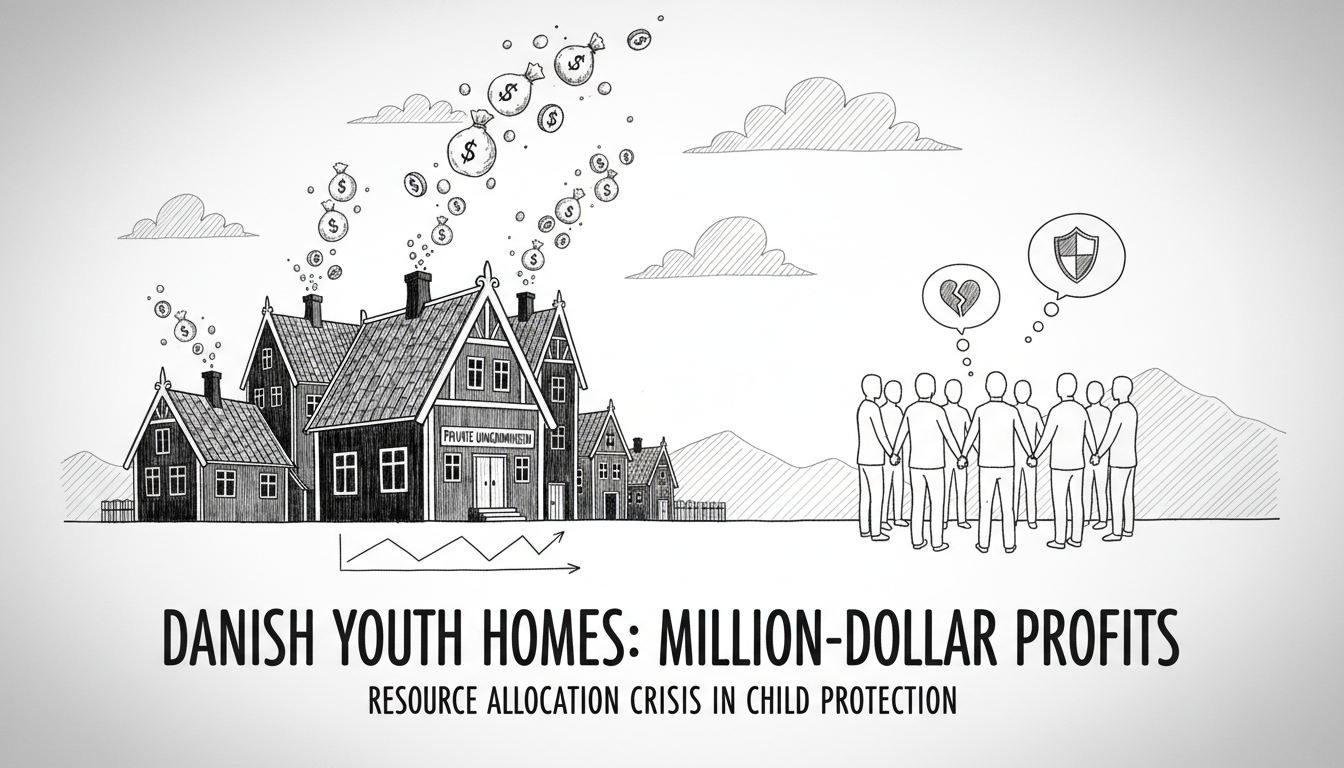Nearly half of Denmark's private residential homes for vulnerable children and youth achieve higher profit margins than the world's largest publicly traded companies. New research reveals this surprising financial reality in Denmark's care sector.
A substantial number of private facilities housing at-risk children maintain millions in reserve funds. The National Research and Analysis Center for Welfare conducted the study examining the financial operations of these institutions.
These findings raise important questions about resource allocation in Denmark's child protection system. Denmark maintains one of Europe's most comprehensive welfare systems, yet these profit levels suggest potential imbalances between care quality and financial returns.
The research shows that approximately one-third of private youth homes operate with significant financial reserves. This situation occurs while municipalities struggle with budget constraints and care providers often report resource shortages.
Denmark's child protection system relies heavily on private providers operating under municipal contracts. These facilities care for children removed from their families due to abuse, neglect, or other serious circumstances. The high profitability raises concerns about whether public funds intended for child welfare are achieving their intended purpose.
International readers should understand that Nordic welfare models typically emphasize social equality and public service over private profit. These findings present a potential contradiction within that system. The substantial reserves could indicate either efficient management or excessive profit-taking from vulnerable populations.
What do these profit levels mean for care quality? This question remains unanswered in the current research. The study focuses on financial metrics rather than service quality or child outcomes. Future investigations should examine whether financial success correlates with better living conditions and support services.
The Danish government faces increasing pressure to ensure public funds serve their intended social purposes. These findings will likely trigger parliamentary discussions and potential regulatory reviews. Other Nordic countries may examine their own care systems for similar patterns.
Child protection remains a sensitive political issue across Scandinavia. All Nordic nations pride themselves on comprehensive social safety nets. Evidence of high profitability in essential services challenges this self-image and could drive policy changes.
Municipalities contract these facilities while bearing ultimate responsibility for child welfare. The financial findings suggest contract negotiations might not adequately prioritize service quality over cost efficiency. This situation reflects broader tensions between public service ideals and market-based solutions in contemporary Nordic welfare states.

